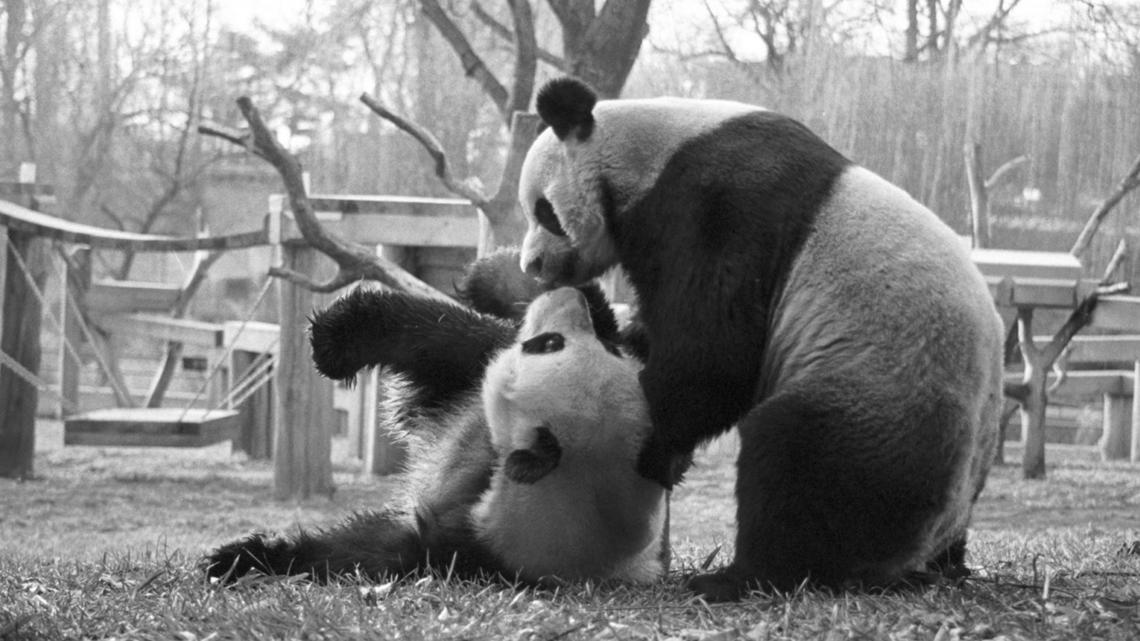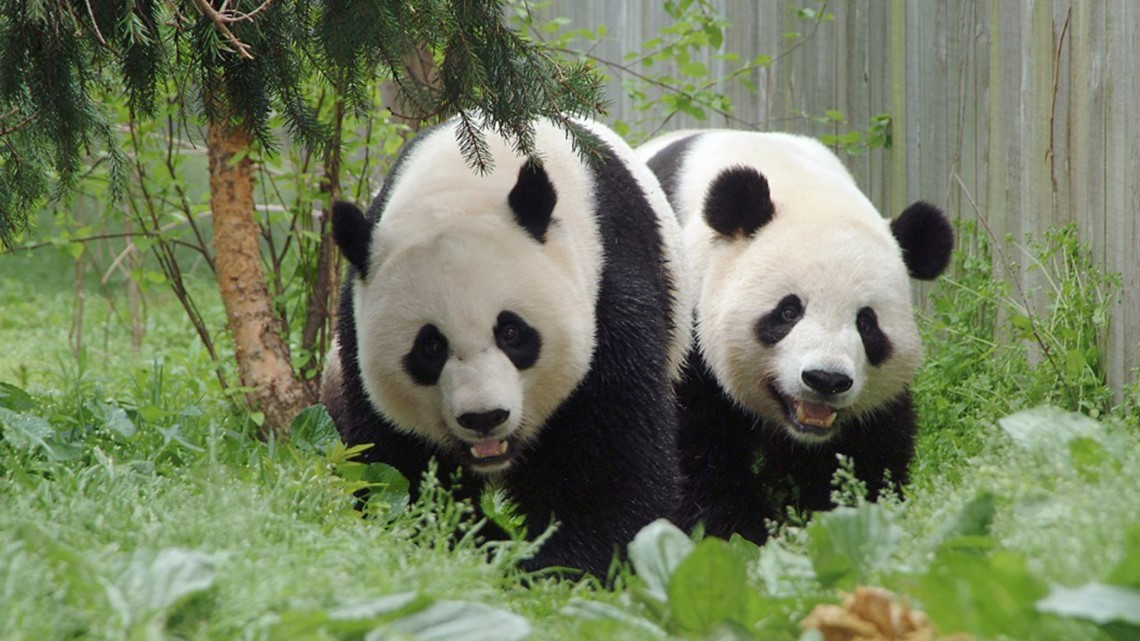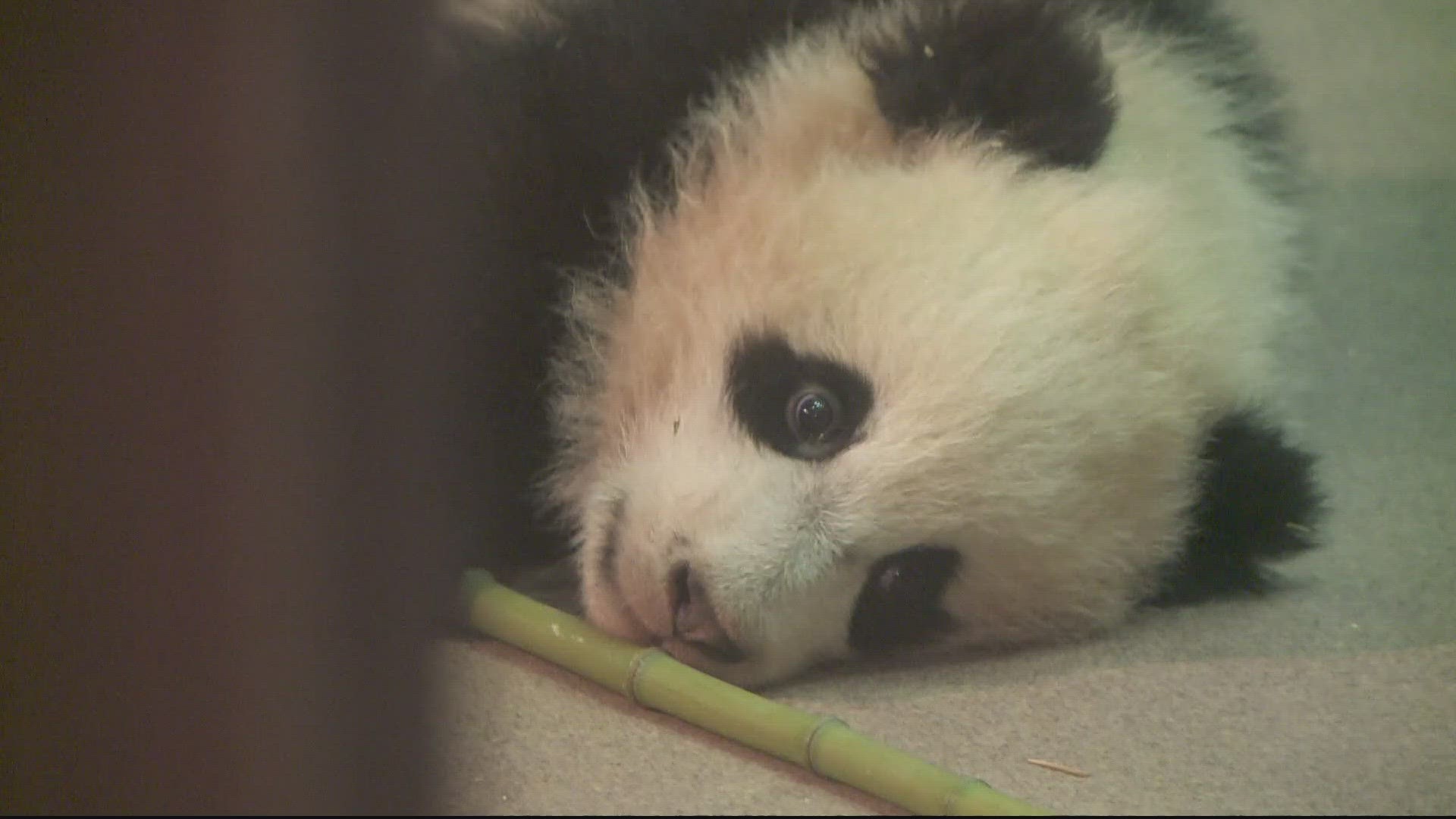WASHINGTON — As the National Zoo's giant pandas depart D.C., bringing an end to a 50-year relationship between China and the zoo, WUSA9 wanted to take a closer look at how we got here.
Back in 1972, while at a dinner in Beijing, first lady Patricia Nixon mentioned being fond of giant pandas to Chinese Premier Zhou Enlai. To garner some goodwill with the United States, Premier Enlai gifted two giant pandas to the U.S. after President Nixon's visit to China.
Several zoos across the country battled to house the pandas. But ultimately the Nixons chose the Zoo in their own backyard: the Smithsonian National Zoo in Washington, D.C. as the permanent home for the panda bears. For the 50+ years giant pandas remained in D.C., they became a symbol of "cross-cultural collaboration" between the Chinese and American people.


On April 16, 1972, the giant pandas Ling-Ling (a female) and Hsing-Hsing (a male) arrived at their new home.
During their 20 years together at the Smithsonian's National Zoo, this panda pair produced five cubs, but none of the cubs survived more than a few days.
Ling-Ling died on Dec. 30, 1992, of heart failure at the age of 23. Hsing-Hsing was euthanized in 1999 after suffering many debilitating diseases, including terminal kidney disease. He was 28.
In 2000, a second pair of giant pandas, Mei Xiang and Tian Tian, arrived in Washington, D.C. on a FedEx aircraft called PandaOne. Unlike Ling-Ling and Hsing-Hsing, the second pair of pandas were a loan. An agreement reached with the Chinese government stipulated the pair would live at the Zoo for 10 years in exchange for $10 million. The agreement also meant that any cub born in D.C. would be sent to China once they turned four.
The Zoo has renewed its Giant Panda Cooperative Research and Breeding Agreement with the China Wildlife Conservation Association three times since 2000. It was not renewed in 2023, which is why the pandas are headed home.


In the early 2000s, the panda pair attempted natural breeding, with no success, so scientists and veterinarians moved on to artificial insemination. In 2005, Mei Xiang gave birth to the Zoo's first surviving panda cub, Tai Shan.
Fifteen years later, in 2020, the world was captivated by the arrival of Mei Xang's fourth surviving cub Xiao Qi Ji. The world fell in love with Xiao Qi Ji thanks in part to the National Zoo's Panda Cam. It allowed fans to track the cub's development even while the zoo was closed to visitors due to the COVID-19 pandemic.
Mei Xang was 22 years old when she had Xiao Qi Ji, making her the oldest panda to give birth in the U.S.
"The arrival of the giant pandas drew millions of fans from around the world to the Zoo," the National Zoo said. "It also gave the Smithsonian an unparalleled opportunity to study giant panda behavior, health, reproduction and ecology. Specifically, it allowed animal care staff and scientists to learn about panda estrus, breeding, pregnancy, pseudopregnancy and cub development as well as study giant panda native habitat in China. Over decades of joint efforts with Chinese partners, the Zoo’s breeding, veterinary and ecological research has provided critical data for the management of giant pandas in human care and valuable insights for the conservation of wild populations."
Over the last few decades, the pandas have become an unofficial mascot for the nation's capital, providing moments of levity in darker times. Their gleeful snow day adventures, romps around their D.C. enclosures and numerous birthday affairs -- always celebrated with smash able cakes -- were always tracked by the panda cam.
Mei Xiang, Tian Tian and Xiao Qi Ji left D.C. Wednesday morning on a flight from Dulles back to China.
"Although this farewell is bittersweet, we must celebrate these bears and their impact on fans and on our understanding, care and conservation of their species," said Brandie Smith, the John and Adrienne Mars Director of the National Zoo.
You can see a full timeline of the panda breeding, research and conservation program at the Smithsonian National Zoo dating back to 1972 on the Zoo's website.

